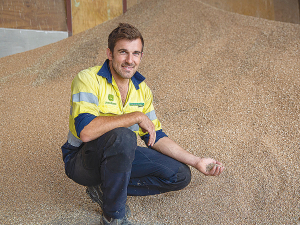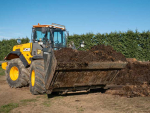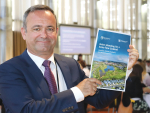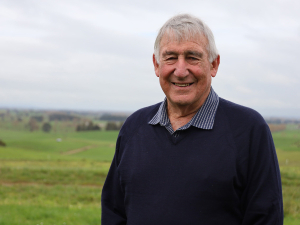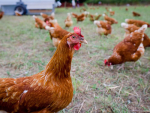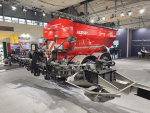Investing in precision agriculture has provided North Canterbury farmer Roscoe Taggart with benefits - environmental, social and financial.
It helps to continuously improve his family's 730 hectare arable and sheep operation.
Taggart is participating in a six-month farming innovation project, which examines how using innovative approaches improves farming practices. Waimakiriri Landcare Trust (WLT) and Waimakiriri Irrigation Limited (WIL) have partnered with the Ministry for Primary Industries (MPI) for the project, with support from MPI's Sustainable Food and Fibre Futures fund - along with Environment Canterbury, Ballance and DairyNZ.
At the start of the project, Taggart applied variable rate nitrogen fertiliser with nitrogen sensors attached to the roof of his tractor, which has proven to be a game-changer by applying the precise amount of fertiliser required for each paddock.
Having experienced the benefits of being able to apply variable rate nitrogen in real time, Taggart has followed this up by grid sampling his farm in blocks to improve the efficiency of spreading fertiliser, while also reducing costs and environmental impacts.
"Traditionally we have done a standard soil test which is a transect across a paddock with about five or six samples. With grid sampling we are taking a sample every hectare and after we put this information into our variable rate spreader, we can spread our fertiliser in a much more educated way," he explains.
"This is especially important when you are doing your base application because if you get this right, you will get an even crop, and this has many flow-on effects."
By applying his fertiliser in such a precise manner, Taggart anticipates growing crops that are more even, which will make crop management much easier over the season.
"You will have everything happening at the same time in terms of the growth stages and a more even crop when it is time to harvest," he adds.
"Financially you are better off too, as it makes your yield more even. You do have to invest more upfront with new technology, but it is well worth it when you consider the long-term benefits."
The environmental and social benefits of applying the right amount of fertiliser at the correct time are also important to Taggart.
"One of the biggest things we have got going on now in agriculture is our inputs and leaching. If we use science and technology to apply only what is needed to each paddock, then we are ticking boxes all over the place. Above all else, it is the right thing to do," he says.
"From my perspective we need to prove that we meet the requirements to keep our social licence to operate and it is important to do the right thing on farm for our wider community."





